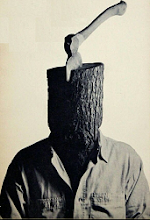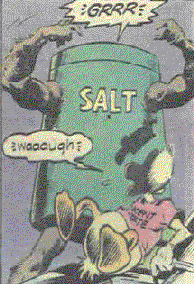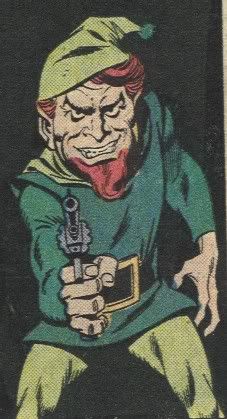A Lost Character: The Charms of the White Tiger
He was a great opportunity lost. He was that rarest of characters: immediately interesting, visually striking, and just complex enough to be capable of sustaining a long series on his own.
He was Christopher Priest’s version of the White Tiger. And dammit, they erased him.
His few appearences were in titles few folks read, so let me explain why I dig this guy. His story began in the last few issues of the Black Panther series of the late nineties.
Kevin “Kasper” Cole was a narcotics cop in Brooklyn. He wasn’t an idealist or a man laden with pretensions of heroism. For Kasper, it was just a job. He was following his father, a Kenyan immigrant known as “Black” Jack Cole. “Black” Jack was a widely-respected cop who had recently been sent to prison on corruption charges.
Kevin’s nickname of “Kasper” was due to his mixed heritage. “Black” Jack had married Ruth, a white Jewish woman, and their son was a light-skinned man. So light, the neighbor kids called him “Kasper.”
With his father in prison, Kevin was the sole support of his nagging and clueless yenta mother and his girlfriend, the pregnant and shrill Gwen. They shared a small crappy apartment in Harlem.
Kasper’s primary motivation in life was to get promoted, make more money, and move all three of them to a better part of town.
While out on the job, he ran across a long-ago ditched suit of the Black Panther, a superhero who was also the king of the highly-advanced African nation of Wakanda. The suit, which looks like a tight black unitard, was bulletproof and contained all sorts of odd techno-goodies. He put on the Panther’s gear under his clothes for protection.
Police corruption again reared its ugly head in Kasper’s life. He faced the choices of going to jail or going to Internal Affairs, which would be career suicide. Thus, to protect his family and himself, he pretended to be the Black Panther and went after the dirty cops.
Shortly he was mixed up with the Wakandan secret police, the Panther’s old enemies, and the Panther himself. (In true Priest fashion, the story got a bit convoluted. But damn, did it work here.)
When it was over, the Wakandans took on Kevin Cole as an “acolyte of the Panther cult.” He was given a copy of the herb that gives the Black Panther his powers (super-enhanced senses, somewhat enhanced agility and strength), an all-white copy of the Panther’s suit, and copies of all of the Panther’s techno-toys. He later added to the gear a black trenchcoat, which looks very odd over the all-white bodysuit, and a pair of automatic pistols that fire paralytic gel bullets.
He works on a number of levels.
Visually, he’s arresting. All white catsuit with no face on it? Sweet. He can run along walls and has short metal claws that can pop out of the ends of his gloves, both of which create cool-o visuals. Also, the contrast between the optical-white suit and the black coat draws the eye.
His powers are just barely superhuman and his techno-gear isn’t dominating. This means that he’ll have to work for his victories, and thus his stories are more engaging.
Moreover, his personal life is unusual for a superhero, but not for a normal guy. He’s trying to live up to his father (who, if memory serves, was actually corrupt, but Kevin doesn’t know that), deal with his nagging mother, and survive his girlfriend. His opinion of Gwen flips between staying with her for the baby’s sake and caring about her, which feels real.
Also, when in costume, Kevin narrarates the story in Black American English. When he speaks as the White Tiger, he pretends to be Wakandan and uses a generic African accent. The disconnect is mighty. And it’s pretty damn funny.
WHITE TIGER: Now tell me of this “Kingpin” and where he obtains this poison with which you taint these streets.
CAPTION: ‘Fore I smack you in yo’ head, fool.
Heh.
Priest explained the Tiger as “The hero who could be you,” or as “Spider-Man through a dark mirror.” He’s not a superhero. He’s a decent guy in crap circumstances who’s trying to do the right thing, kinda.
After the Black Panther series ended, Kasper Cole went on to star in The Crew, a super-group series that died all too quickly. The Crew had a number of problems, but the White Tiger wasn’t one of them.* To me, he made the whole damn story worthwhile.
This character, who I feel possessed great appeal and promise, is gone from the Marvel Universe, as though he never existed. Aigh.
The name “White Tiger” has seen a lot of use.
The first White Tiger was a martial arts hero in their seventies’ series Deadly Hands of Kung Fu. Said character was killed in Daredevil a while back.
The second White Tiger was a genetically-modified tiger that could transform into a human-ish looking woman by the High Evolutionary. Don't ask, just go with it. Anyway, she was in the revival of Heroes for Hire in the late nineties.
Then came Kasper Cole.
And now they’ve revived the White Tiger name again in Daredevil. The new Tiger is somehow related to the very first one. (Don't know exactly how, since I don’t read Daredevil anymore.**)
Yes, there could be multiple White Tigers running around, but here’s why Kasper Cole is no more. Recently Marvel began a new Black Panther series. This series is considered a “reboot,” and leaves the whole of the Priest Panther series as “non-history.” Dammit.
It is possible that the Kasper White Tiger could be revived without a fuss, but it seems almost a lock he’ll be relegated to the scrapheap of “never happened.”
And that, o comic fans, is a mighty shame.
-------------
*Priest usually writes intricate plots. The Crew was not an exception. It began plainly enough, then spun out into tricky little bits. Plus, there were places where he made leaps in storytelling logic that were difficult to follow. Worst of all, I think he had to rush the conclusion of the story. The last issue or two were particularly tough to read.
I love the guy’s scripting, but he needs artists of incredible clarity and storytelling ability to keep his comics from being impossible to follow. Joe Bennett in The Crew wasn’t quite up to it. Very close, but not quite. And dammit, Priest, would it kill you to fill in just a few more blanks in your stories? I’m a bit slow in the head, and it's hard for me to pick up on some of your subtleties in static images.
Ya know, I bet he’d write a killer movie.
**Lordy, how that book bores me. David Mamet doesn’t translate to comics very well, Mr. Daredevil Writer Guy. Pages of “ums” and “yeahs” are wastes of space in a thirty-some-odd page comic. I am a yahoo philistine, and I accept this.
Click here to read more!




